OK, I heard from enough of you that wanted me to do this in PowerShell instead of my batch file. Here is the original article using built-in Windows utilities. This article will show the original batch file converted to PowerShell.
I created four variables. One for the domain name, one for the top-level domain identifier, one to determine if you want the OUs protected from accidental deletion, and the last to hold the initial password as a secure string.
The structure of the script is the same as the original batch file:
- Creates the OUs
- Creates the security groups
- Creates the user accounts
- Adds the user accounts into the security groups
- Creates the computer accounts
$ADDomain = "labaddomain" $TLD = "com" $Protect = $False $CryptoPwd = (ConvertTo-SecureString -AsPlainText "FakePwd" -Force) #Create OUs New-ADOrganizationalUnit -Name "Lab" ` -Path "dc=$ADDomain,dc=$TLD" ` -ProtectedFromAccidentalDeletion $Protect -verbose New-ADOrganizationalUnit -Name "Accounts" ` -Path "ou=Lab,dc=$ADDomain,dc=$TLD" ` -ProtectedFromAccidentalDeletion $Protect -verbose New-ADOrganizationalUnit -Name "Admin" ` -Path "ou=Accounts,ou=Lab,dc=$ADDomain,dc=$TLD" ` -ProtectedFromAccidentalDeletion $Protect -verbose New-ADOrganizationalUnit -Name "Service" ` -Path "ou=Accounts,ou=Lab,dc=$ADDomain,dc=$TLD" ` -ProtectedFromAccidentalDeletion $Protect -verbose New-ADOrganizationalUnit -Name "User" ` -Path "ou=Accounts,ou=Lab,dc=$ADDomain,dc=$TLD" ` -ProtectedFromAccidentalDeletion $Protect -verbose New-ADOrganizationalUnit -Name "Desktops" ` -Path "ou=Lab,dc=$ADDomain,dc=$TLD" ` -ProtectedFromAccidentalDeletion $Protect -verbose New-ADOrganizationalUnit -Name "Admin" ` -Path "ou=Desktops,ou=Lab,dc=$ADDomain,dc=$TLD" ` -ProtectedFromAccidentalDeletion $Protect -verbose New-ADOrganizationalUnit -Name "XD76" ` -Path "ou=Desktops,ou=Lab,dc=$ADDomain,dc=$TLD" ` -ProtectedFromAccidentalDeletion $Protect -verbose New-ADOrganizationalUnit -Name "Groups" ` -Path "ou=Lab,dc=$ADDomain,dc=$TLD" ` -ProtectedFromAccidentalDeletion $Protect -verbose New-ADOrganizationalUnit -Name "Admin" ` -Path "ou=Groups,ou=Lab,dc=$ADDomain,dc=$TLD" ` -ProtectedFromAccidentalDeletion $Protect -verbose New-ADOrganizationalUnit -Name "Desktops" ` -Path "ou=Groups,ou=Lab,dc=$ADDomain,dc=$TLD" ` -ProtectedFromAccidentalDeletion $Protect -verbose New-ADOrganizationalUnit -Name "User" ` -Path "ou=Groups,ou=Lab,dc=$ADDomain,dc=$TLD" ` -ProtectedFromAccidentalDeletion $Protect -verbose New-ADOrganizationalUnit -Name "Servers" ` -Path "ou=Lab,dc=$ADDomain,dc=$TLD" ` -ProtectedFromAccidentalDeletion $Protect -verbose New-ADOrganizationalUnit -Name "PVS" ` -Path "ou=Servers,ou=Lab,dc=$ADDomain,dc=$TLD" ` -ProtectedFromAccidentalDeletion $Protect -verbose New-ADOrganizationalUnit -Name "XD76" ` -Path "ou=Servers,ou=Lab,dc=$ADDomain,dc=$TLD" ` -ProtectedFromAccidentalDeletion $Protect -verbose #Create AD security groups New-ADGroup -Name "LocalAdmins" -SamAccountName LocalAdmins ` -GroupCategory Security -GroupScope Global ` -DisplayName "Group for users who need local admin rights" ` -Path "ou=Admin,ou=Groups,ou=Lab,dc=$ADDomain,dc=$TLD" ` -Description "Group for users who need local admin rights" -verbose New-ADGroup -Name "XDUsers" -SamAccountName XDUsers ` -GroupCategory Security -GroupScope Global ` -DisplayName "Group for users who need XenDesktop desktop access" ` -Path "ou=User,ou=Groups,ou=Lab,dc=$ADDomain,dc=$TLD" ` -Description "Group for users who need XenDesktop desktop access" -verbose #Create user accounts New-ADUser -Name svc_ctxpvs -AccountPassword $CryptoPwd ` -CannotChangePassword $True -ChangePasswordAtLogon $False ` -Description "Citrix PVS Service Account" ` -DisplayName "Citrix PVS Service Account" -Enabled $True ` -PasswordNeverExpires $True ` –Path "ou=Service,ou=Accounts,ou=Lab,dc=$ADDomain,dc=$TLD" ` -SamAccountName "svc_ctxpvs" –UserPrincipalName "svc_ctxpvs@$ADDomain.$TLD" ` -verbose New-ADUser -Name svc_ctxsqldb -AccountPassword $CryptoPwd ` -CannotChangePassword $True -ChangePasswordAtLogon $False ` -Description "Citrix SQL DBA Service Account" ` -DisplayName "Citrix SQL DBA Service Account" -Enabled $True ` -PasswordNeverExpires $True ` –Path "ou=Service,ou=Accounts,ou=Lab,dc=$ADDomain,dc=$TLD" ` -SamAccountName "svc_ctxsqldb" –UserPrincipalName "svc_ctxsqldb@$ADDomain.$TLD" ` -verbose New-ADUser -Name User1 -AccountPassword $CryptoPwd ` -CannotChangePassword $True -ChangePasswordAtLogon $False ` -Description "User1 PvD" ` -DisplayName "User1" -Enabled $True ` -PasswordNeverExpires $True ` –Path "ou=User,ou=Accounts,ou=Lab,dc=$ADDomain,dc=$TLD" ` -SamAccountName "User1" –UserPrincipalName "User1@$ADDomain.$TLD" ` -verbose New-ADUser -Name User2 -AccountPassword $CryptoPwd ` -CannotChangePassword $True -ChangePasswordAtLogon $False ` -Description "User2 PvD" ` -DisplayName "User2" -Enabled $True ` -PasswordNeverExpires $True ` –Path "ou=User,ou=Accounts,ou=Lab,dc=$ADDomain,dc=$TLD" ` -SamAccountName "User2" –UserPrincipalName "User2@$ADDomain.$TLD" ` -verbose New-ADUser -Name User3 -AccountPassword $CryptoPwd ` -CannotChangePassword $True -ChangePasswordAtLogon $False ` -Description "User3 PvD" ` -DisplayName "User3" -Enabled $True ` -PasswordNeverExpires $True ` –Path "ou=User,ou=Accounts,ou=Lab,dc=$ADDomain,dc=$TLD" ` -SamAccountName "User3" –UserPrincipalName "User3@$ADDomain.$TLD" ` -verbose #all users in the Lab/Accounts/User OU get added to the XDUsers security group $Users = get-aduser ` -searchbase "ou=user,ou=accounts,ou=lab,dc=$ADDomain,dc=$tld" ` -filter * Add-ADGroupMember -Identity XDUsers -Members $Users #any user in the Lab/Accounts/User OU that has PvD in the description #gets added to the LocalAdmins security group $Users = get-aduser ` -searchbase "ou=user,ou=accounts,ou=lab,dc=$ADDomain,dc=$tld" ` -filter 'Description -like "*PvD*"' Add-ADGroupMember -Identity LocalAdmins -Members $Users #Create AD computer accounts New-ADComputer -Name PVS76 -SamAccountName PVS76 -Description "PVS76" ` -Path "ou=PVS,ou=Servers,ou=Lab,dc=$ADDomain,dc=$TLD" -Enabled $True -verbose New-ADComputer -Name XD76 -SamAccountName XD76 -Description "XD76" ` -Path "ou=XD76,ou=Servers,ou=Lab,dc=$ADDomain,dc=$TLD" -Enabled $True -verbose New-ADComputer -Name Director -SamAccountName Director -Description "Director" ` -Path "ou=XD76,ou=Servers,ou=Lab,dc=$ADDomain,dc=$TLD" -Enabled $True -verbose New-ADComputer -Name StoreFront -SamAccountName StoreFront -Description "StoreFront" ` -Path "ou=XD76,ou=Servers,ou=Lab,dc=$ADDomain,dc=$TLD" -Enabled $True -verbose New-ADComputer -Name SQL -SamAccountName SQL -Description "SQL" ` -Path "ou=XD76,ou=Servers,ou=Lab,dc=$ADDomain,dc=$TLD" -Enabled $True -verbose
I named the script CreateLab.ps1.
Figure 1 shows my Active Directory structure before running the script.
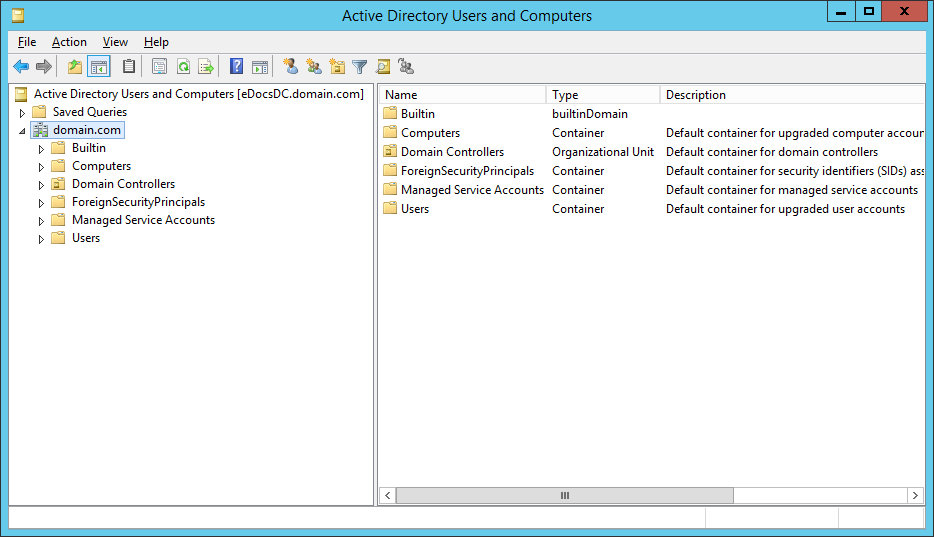
Figure 2 shows the results of running the PowerShell script.
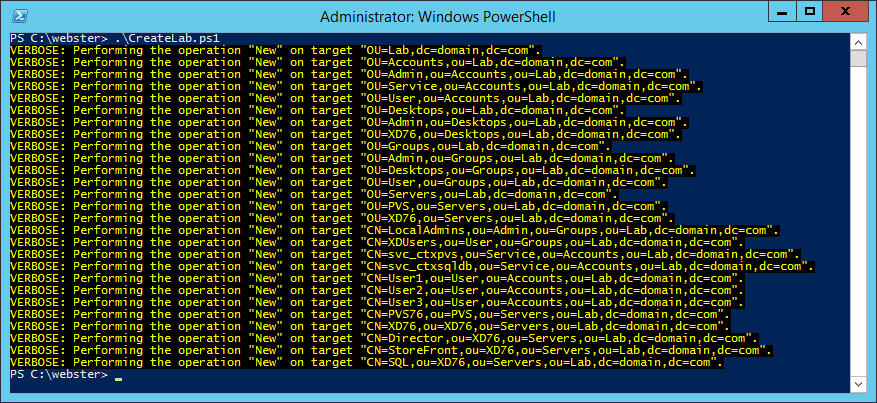
Figures 3 through 13 show the AD structure after running the script (which matches running the batch file).
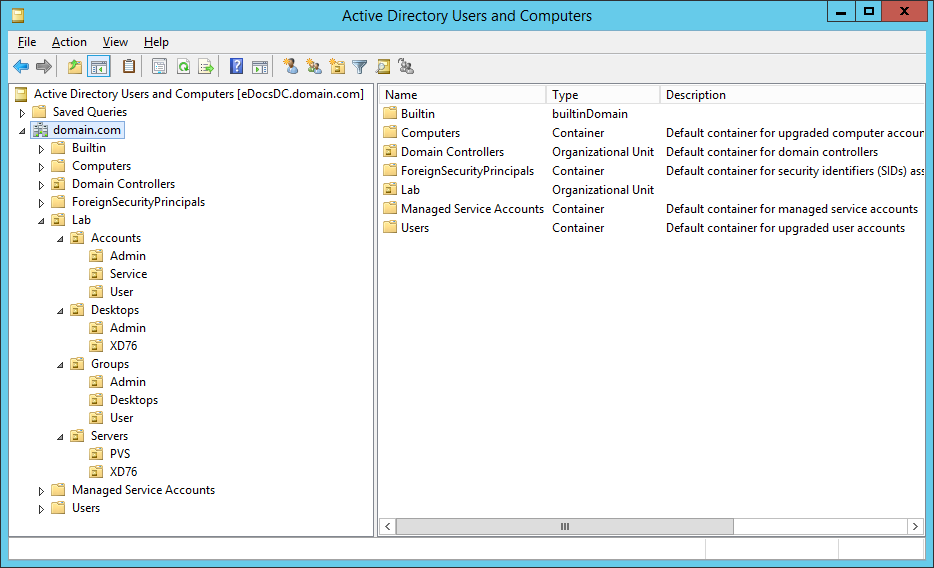
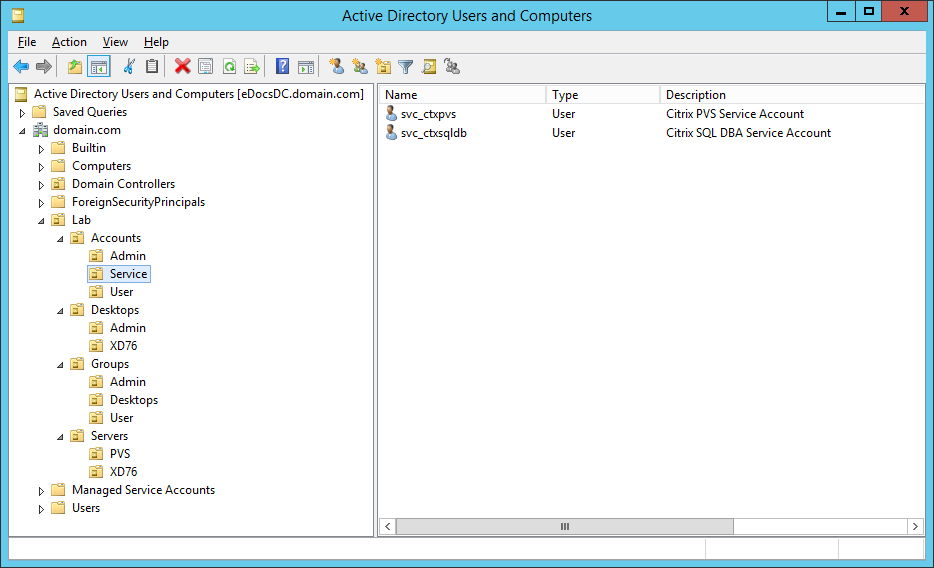
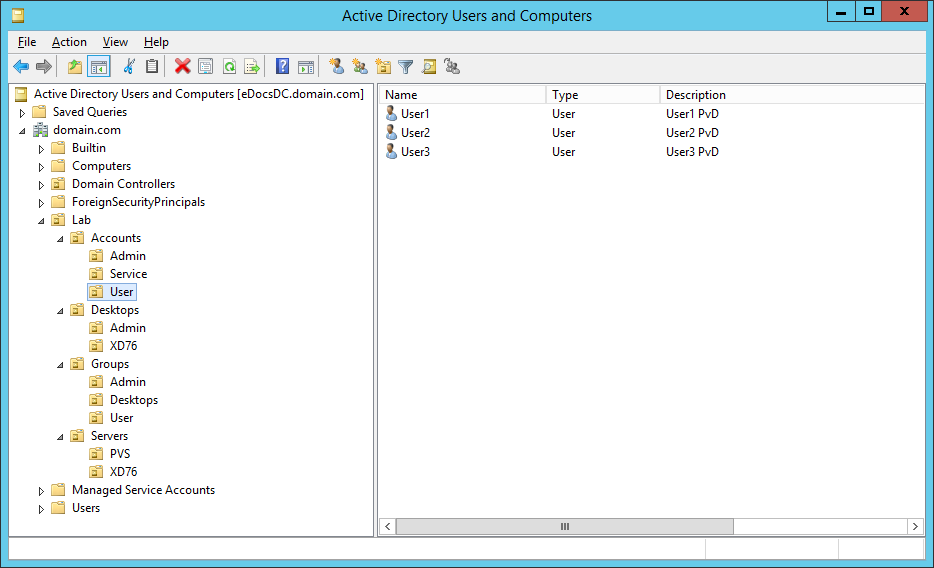
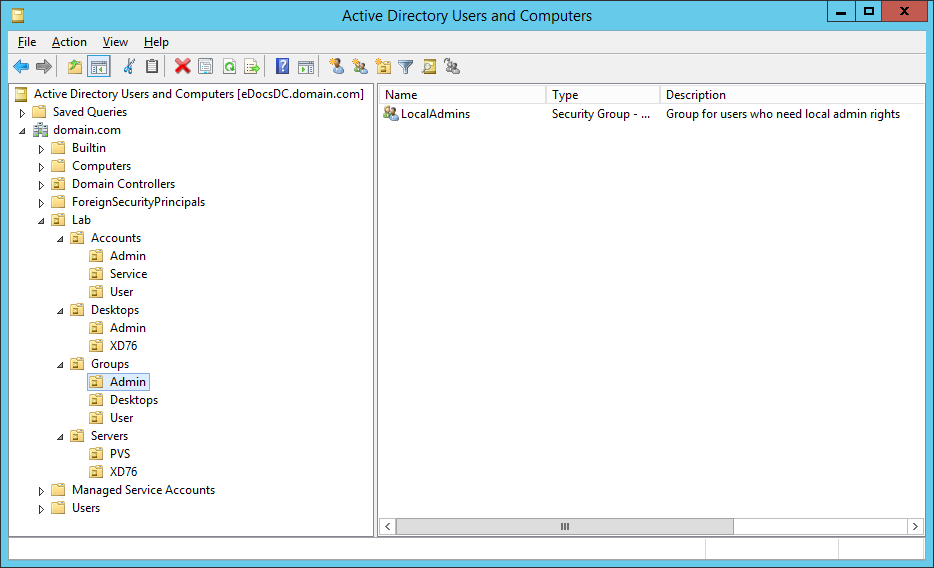
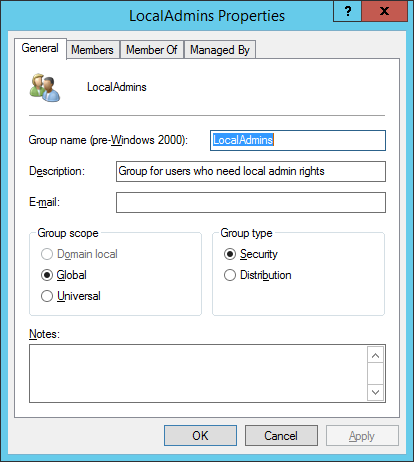
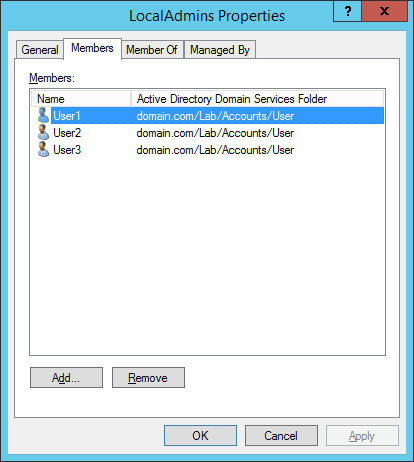
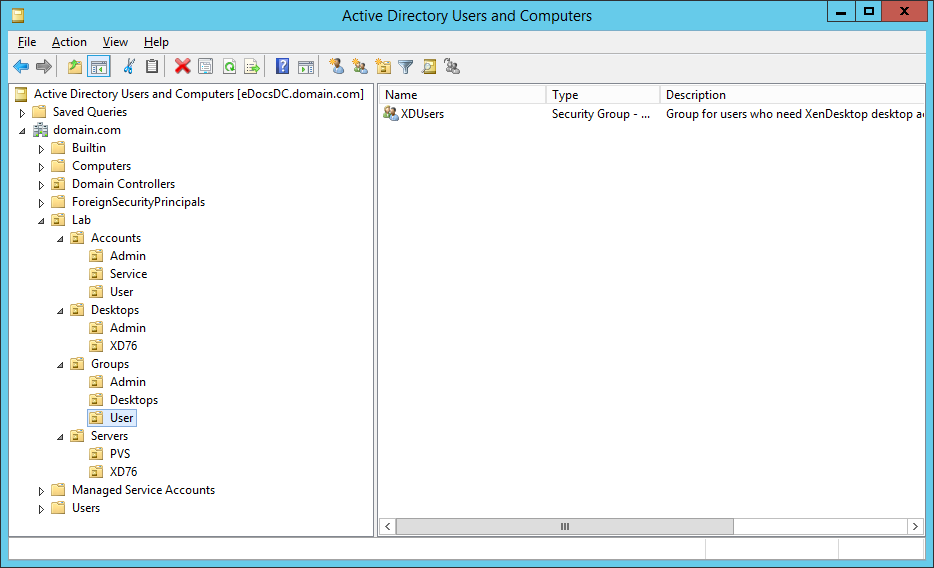
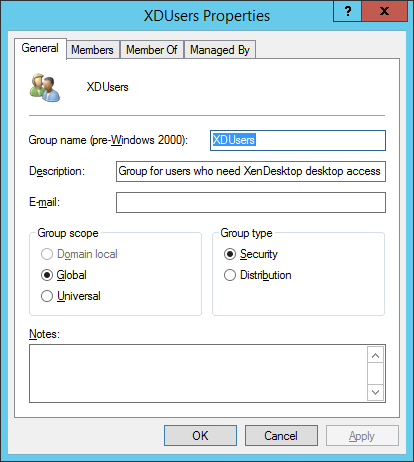
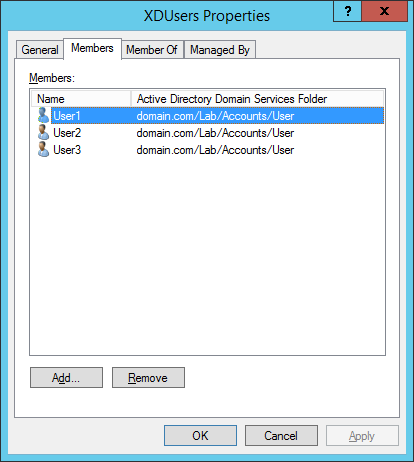
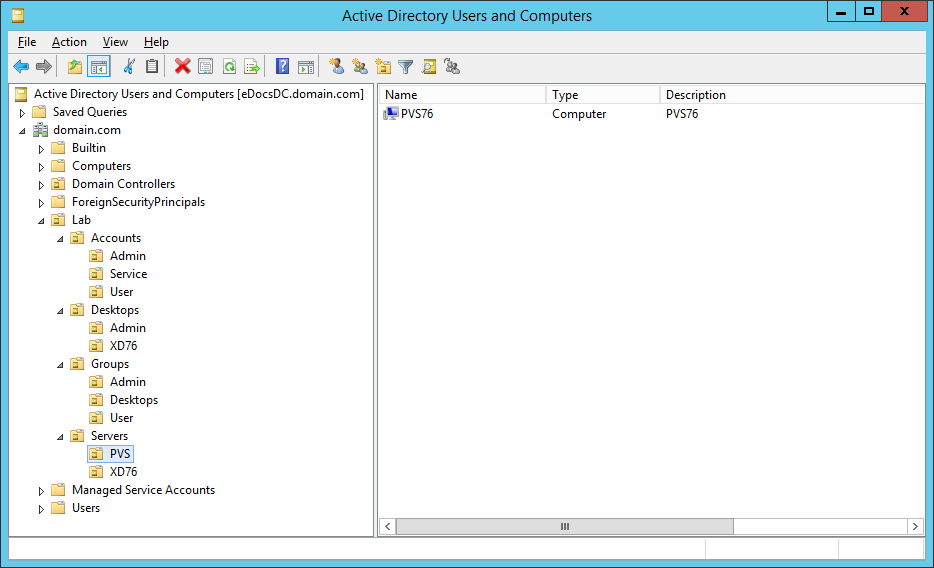
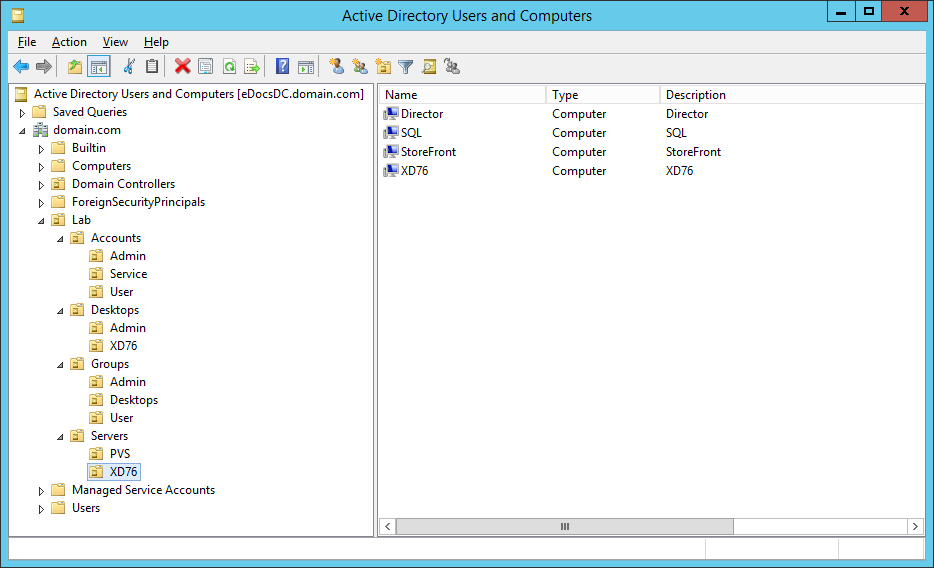
There you go, a PowerShell version of the batch file I use to create my lab’s AD structure.
You can get a PS1 version here and a TXT version here.
Thanks
Webster
Carl,
I didn’t mean for you to burn your free time to convert the batch file to PS!!! Cool that you provided the PS script to accomplish the same as the batch file. I intend to test this sucker out.
Thanks for providiing your knowledge…always a great resource.
Rob
Only took an hour to do it.
Webster